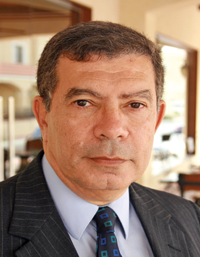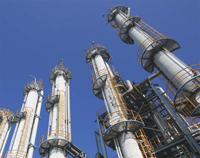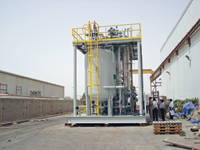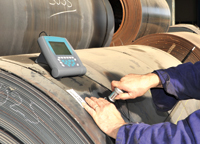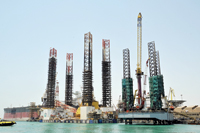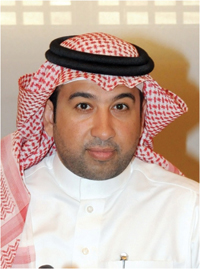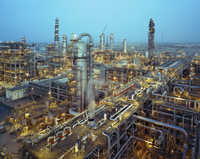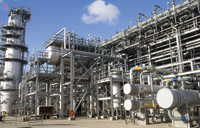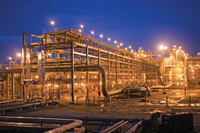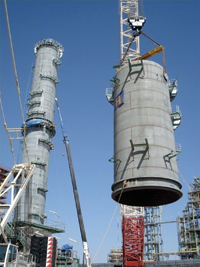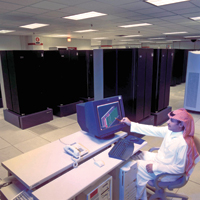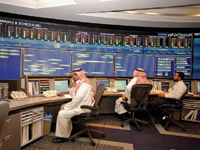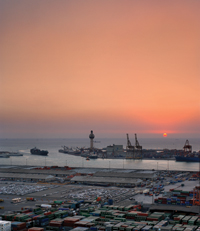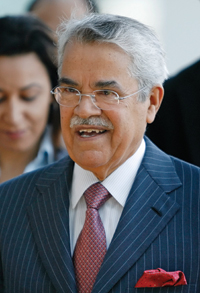
WORK is under way on a new 400,000 barrel per day (bpd) day refinery at Yanbu in Saudi Arabia which is expected to be operational by September 2014.
The Yanbu Aramco Sinopec Refining Company (Yasref) is being built under a joint venture between Aramco and Chinese refining giant Sinopec at a cost of between $8 and $10 billion in a deal that builds on the kingdom’s growing relationship with its biggest crude oil customer. Saudi Aramco has a 62.5 per cent stake in the joint venture and Sinopec the remaining 37.5 per cent.
The world-scale refinery will process 400,000 bpd of Arab Heavy crude oil and produce high-end products according to international specifications, Saudi Aramco CEO Khalid Al Falih says, noting that this was the fourth Saudi-Sino joint venture project.
Saudi Arabia accounts for one fifth of China’s total crude oil imports and China is the kingdom’s largest single crude oil market and Falih says further joint projects are being planned. Sinopec signed up for the project after ConocoPhillips pulled out in 2010. The refinery is one of several projects that the Opec giant is undertaking to boost its domestic refining capacity to 3.8 mbpd from 1.9 mbpd.
“This ultra-modern, highly sophisticated grassroots refinery will process 400,000 bpd of heavy crude oil, and convert every single crude oil molecule into high quality, clean transportation fuels which are in high demand and which meet the most stringent global standards,” Al Falih says.
“The facility’s location in Yanbu, next to two of our other refineries, is ideal for supplying both overseas markets and the fast-growing western region of the kingdom,” he adds.
Saudi Aramco’s investments in both local and refining joint ventures are “a testament to our firm belief that the downstream remains an attractive and profitable business,” Al Falih says.
“In fact, over the next decade our total global refining capacity is expected to approach 8 mbpd, as a result of the largest expansion today by any oil company in the world,” he says.
Saudi Aramco has said previously that the refinery will produce 90,000 bpd of gasoline, 263,000 bpd of ultra-low sulphur diesel and 6,300 metric tonnes per day of petcoke as well as 1,200 metric tonnes of sulphur. Saudi Aramco plans on doubling its refining output to some 8 mbpd in ten years, with much of that new capacity expected to be in China.
“Over the next decade our total global refining capacity is expected to approach 8 mbpd, as a result of the largest expansion today by any oil company in the world,” Al Falih says. Aramco’s current portfolio represents 4.1 mbpd.
He says the company plans to refine a market volume that is close to what the company produces, which stood at just below 10 mbpd in December.
He clarified that this does not mean Aramco will necessarily be refining 8 mbpd of its own crude but rather could source some oil for its international ventures from other suppliers. Aramco’s downstream-weighted investment plans include re-activating the shelved Ras Tanura refinery expansion, which was to add 400,000 bpd of new capacity to the existing 550,000 bpd Ras Tanura refinery.
Al Falih says Aramco will come back to the project within the next decade, and it “would probably have a different configuration and a different size.”
Aramco is also building the 400,000 bpd Satorp refinery with France’s Total, and the facility is expected to be on line at the eastern city of Jubail in 2013. Aramco plans its solely owned 400,000 bpd semi-conversion refinery in Jizan by 2017.
Al Falih says the company sees additional growth areas in Indonesia and Vietnam, but he singled out China’s huge consumer market. “I hope that a lot of that 8 mbpd of our portfolio will be in China, and I hope a lot of it will be with Sinopec,” he says.
The two companies are considering more than doubling their refining capacity in Fujian province, Al Falih says. It “requires more discussion on feasibility,” says Al Falih. Aramco, Sinopec and ExxonMobil already jointly own the 240,000 bpd Fujian refinery.
Al Falih says his company remains in talks to join Sinopec’s 200,000 bpd Qingdao refinery, which has long been discussed but never finalised.
Aramco signed a memorandum of understanding with PetroChina to build a 200,000 bpd refinery at Yunnan in Southwest China last year. All of Aramco’s proposed and announced refinery expansions would bring capacity to just over 6.5 mbpd – still well short of the 8 mbpd target. Al Falih did not say where the company planned to build more than 1 mbpd of unannounced capacity.
Unlike Aramco, most oil companies are ditching their refining assets, choosing to deploy their capital elsewhere.
The Saudi oil giant says it is transforming itself into a more balanced energy company by bringing its refining and petrochemical output in line with its huge 12 mbpd upstream production.
“Wherever it makes long-term commercial sense, is sustainable, we can create wealth for the community where we work, there is demand and a shortage of products, we will be there,” Al Falih says.



















































































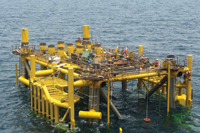
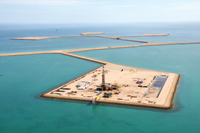


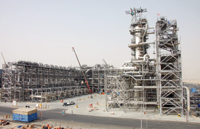

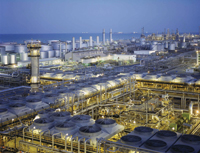



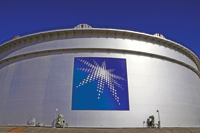



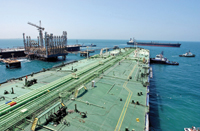
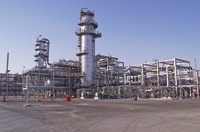

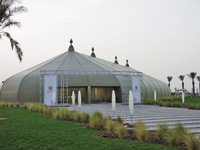

.jpg)
